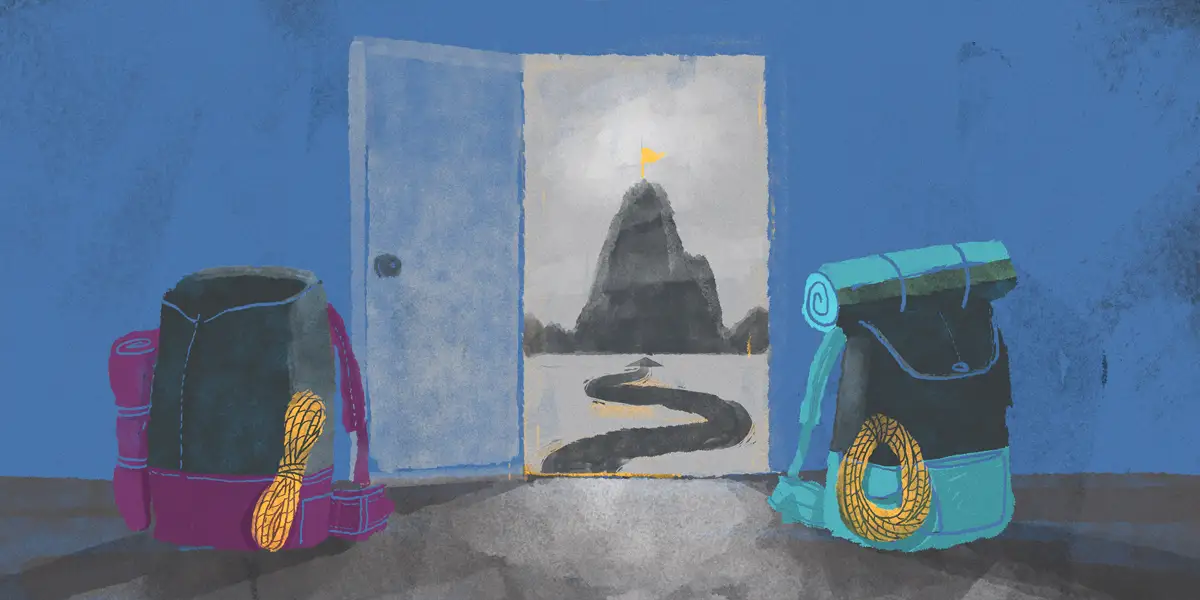(This article on successor development invitations is part two of our series on CEO succession planning conversations. See part one on identifying potential successors.)
Aside from the ultimate decision about the next chief executive, the most sensitive and politically charged aspect of the CEO succession process is the question, “Who?” Who are our strongest internal candidates? What criteria will we use to evaluate their potential? How will we talk about the successor development process? To whom will we communicate, and when? Having clear answers to these questions before getting started is critically important.
There are too many nuances to these questions to cover all of them in one short piece. In fact, we’ve written books to cover them. But in this blog series, I can represent the most essential need-to-know talking points in these highly sensitive conversations.
Why so much caution? Because we’ve seen these conversations go badly. The best intentions can overlook key concerns or expectations and result in disenfranchised successors, frustrated board directors, slow (or no) growth and development, and ultimately a stalled process that yields no change in readiness for succession.
A few basics can protect your process from those outcomes. In the first part of this series, I covered the conversation between the CEO and CHRO to identify potential successors. In this piece, I’ll outline how to set the stage for a productive discussion with potential CEO successors—one that’s positive, reinforcing, and candid.
Succession isn’t a promise, nor is it a gift. It’s risk management through retention, growth, and development that helps leaders prepare for assignments beyond the range of their experiences. That growth only happens with shared understanding and intent. And that’s what the first conversation with successors should emphasize.
What NOT to Do in the First Successor Development Conversation
One of the most common mistakes I see in the successor kickoff conversation is that the CEO jumps ahead too quickly, typically with an “heir apparent” in mind.
The CEO says something like: “I know, you know, and the board knows that you’re probably the one to take over my job. So we need to show the board that you’ll be ready when the time comes.”
Here’s the thing: Having a strong CEO successor in waiting is a tremendous asset, and when it happens, it’s a great boon to the business, the culture, and usually shareholders as well. But remember, succession is risk management, and risk management requires optionality. While it may be true that a high-flying CEO successor will step in and take the helm without incident, assuming it will happen in that way is like investing all your money in one place. Better to diversify.
But here’s where that form of succession planning can go wrong:
1. The context changes—every time.
Context can mean business or culture, but with CEO succession, it always means both. An often-unrecognized reality is that every CEO will experience a context shift, partly because they themselves are one of the most significant forces in that shift. Yes, business circumstances will change, and they often shift dramatically and without warning, altering the leadership landscape drastically. This can suddenly reduce one leader’s readiness while increasing another’s. But in our experience, cultural dynamics are equally if not more likely to trip up new CEOs. Why? Because most CEO succession processes focus on the culture that “is,” and fail to anticipate how different successors will influence and interact with that culture when they become CEO. Settling on an assumed successor can and often does lead to major oversights in preparing and onboarding successors.
2. Other strong candidates don’t get the chance to show how they can grow.
I once asked a board chair who had overseen CEO succession efforts in several different companies what advice he had for other boards. His response: “Prepare to be surprised.” He wasn’t referring to the performance of the new CEO. He was talking about the growth of the successors. In each of his experiences, at least one successor showed stunning developmental progress, so much so that it affected the board’s perceptions of candidate readiness. A single-successor approach eliminates this possibility.
3. The assumed successor fails to develop.
It’s not unusual for a company to have an excellent COO or CFO that seems to be an ideal successor, perhaps with just one or two key areas in which they need to develop. She just needs to polish her communication skills a bit. If he just softens his approach and backs off a bit from his assertive style, he’ll be fine. Given what appear to be easily surmountable growth needs, the board defaults to the assumption that development will happen. It often doesn’t. More often, these “small” development needs go unaddressed and calcify or worsen, leaving the organization at risk of CEO failure or in a position to scramble for an external candidate.

4. The chosen successor cannot or chooses not to take the role.
In the era of the Great Resignation, boards can’t ignore the very real possibility that senior executives may leave unexpectedly and not for a different company or job. A CEO client of ours was recently blown away with surprise at the sudden retirement of his COO and planned successor. Every attempt was made to convince him to stay on to become CEO in less than two years, but he had made up his mind. “Life is short,” he said to his coach. Meanwhile, the CEO reached for the “reset” button on the succession process.
Regardless of the strength and certainty of your strongest successors, it’s unwise to start off successor development conversations with the promise of ascent. Once again, getting CEO succession right starts with a shared commitment to risk management through preparation, growth, and development.
CEO Succession Planning Conversation #2: How Are We Investing in Successor Development?
With a growth mindset in place, the CHRO and CEO establish a shared understanding and communication discipline around what it means to prepare for CEO succession. And that starts with a well-structured conversation inviting potential successors to the development process.
Here are a few things to keep in mind for that conversation:
Talking Points
A few of the most critical topics to cover in your first successor development conversation are:
- Career aspirations and optionality: It’s important to start by learning about the aspirations of potential successors. But motivation to become CEO cannot be evaluated with a single question: “Do you want it?” We have learned many times that assumed successors often have no interest in the CEO role, and that some who say they’re not interested are actually not sure and may come to think very differently as they gain exposure to the role. The lesson here is to leverage development as a vehicle to explore motivation and draw more informed conclusions as perspectives expand. Motivation for a role as complex and dynamic as CEO is a moving target, one best evaluated in conversations that happen over time. Establishing this as an objective of the development process is a great place to start.
- Successor development does not equal a guarantee: It’s worth saying again: Being invited into a successor development process that has the CEO role as the target is not a promise. Most people will understand and respect this immediately, but for those who have strong CEO aspirations, this may need to be confronted directly. We’ve seen some leaders make grand assumptions about the implications of the invitation to a development process. It’s important to make it clear that readiness for CEO will not be determined by time in current position or experience in high-level scenarios. It’s best to convey that the path to CEO goes through personal growth and development as a leader, and with a strong orientation toward the business and cultural arc that the organization is following. Readiness evaluations and actual selection decisions are down the road from there.
- Successor development is about preparation and growth: Along with the invitation to join a development process comes the accountability to do just that: develop. As a risk management endeavor, CEO succession is a shared responsibility between the board, CEO, CHRO, and successors to create growth and heighten readiness to succeed in the CEO role. The best succession efforts create healthy learning tension. They press leaders into assignments and challenges for which they are not fully ready, but in which they have coaching and support from advisors like the current CEO, key board members, executive coaches, and others who can guide them as they wade into unfamiliar territory. This tension is crucial to preview and acknowledge as a hallmark of great succession. By introducing the thrill and challenge of new assignments, but in a safer way, the organization begins to reduce the risk associated with changing CEOs down the road.
Key Commitments
While you aren’t guaranteeing a specific promotion to the candidate, here’s what you will commit to in the initial successor development conversation:
- Mutual investment in the leader and the organization: The board, the CEO, the CHRO, and the potential successors are all stakeholders in this process. Like any investment, there needs to be a shared commitment to grow talent for the benefit of all stakeholders.
- Shared commitment to transparency around development progress: The ultimate customers of the succession process are your shareholders, customers, and employees. And to deliver the continuity they expect in leadership, the board, CEO, and successors must adopt a transparent approach to reviewing and evaluating the progress of each successor. Quarterly updates to the board are common, and include report-outs on new leadership experiences, assignments, behavior changes, and other aspects of growth.
- Personal payoff regardless of succession outcomes: Retention is always a priority with strong CEO candidates, and development can be positioned as a lever in building one’s professional strength and value. Clearly, it’s not advisable to make promises of promotion, but it is certainly appropriate to promise growth, insight, experience, and increased potential for CEO succession as an outcome of the process. Many organizations have developed multiple senior executives toward the CEO role with full awareness that some would be lost to CEO roles in other companies, but our experience has also been that the growth and development culture that a strong process creates often leads to a magnetic leadership experience that keeps the strongest leaders on the team, even if they don’t get the CEO role.
Secrecy Can Crush Development
Inviting potential successors into a CEO development process is a delicate balance of sharing and holding back. Every executive will ask, either directly or in their minds, “Do I have a chance at the CEO role? Who else is being considered? How do I compare?”
While there may be a strong temptation to give full and concrete answers, the truth—if you are committed to the development-oriented process outlined above—is that you may not yet have answers.
But secrecy is equally dangerous and also unnecessary.
There may be multiple leaders participating in the process, and you may elect to share who those people are. Many of our clients require the entire senior team to participate in the development process (to varying degrees), not only to allow them to say “everyone is involved,” but to create an ethic of development for all C-suite leaders toward the highest levels of leadership.
For smaller groups, it is not uncommon for three to six senior executives to be aware of one another’s participation in the development process. We find that being appropriately open within this small group is far preferable to the attempt to be secretive about the process (which will almost always fail and create unwanted jockeying and competition).
When it comes to questions about candidacy and one’s likelihood of becoming CEO, a development-oriented approach to succession leads to very straightforward, but preliminary answers. It is simply too soon to know because the process is designed only to produce answers when the point of decision is very near. Until then, growth and development is the objective.
Perhaps obviously, these nuances require the CEO and CHRO to be closely aligned and disciplined as they reach out to potential successors. Having a clear overarching strategy for your succession process, along with the right talking points and commitments, will set the stage for high engagement and productive efforts moving forward.
Or at least until the next conversation. Watch this space for my next installment, which will address how the board should review and discuss CEO bench strength and progress.
View more of our series on four CEO succession conversations here:

Part one of our series on CEO succession planning conversations you MUST get right covers the conversation between the CEO and CHRO to identify potential successors.
BLOG
Part 1: Identifying Successors

Part three of our series on CEO succession planning conversations covers the conversation with the board as they review CEO bench strength.
BLOG
Part 3: CEO Bench Strength Review

The final part of our series on CEO succession planning conversations covers the conversation with the board as they evaluate CEO successor readiness.
BLOG
Part 4: CEO Successor Readiness
Subscribe to our blog to see more in this series, “CEO Succession Planning Conversations.”
Get more executive insights by subscribing to our monthly Executive Outlook Newsletter.
Matt Paese, Ph.D., is Senior Vice President, Succession Management & C-Suite Services at DDI. He leads DDI’s Executive Services group, where he and his team help CEOs, boards, senior teams, and executives enhance leadership to grow business, cultural, and personal success.
Topics covered in this blog


